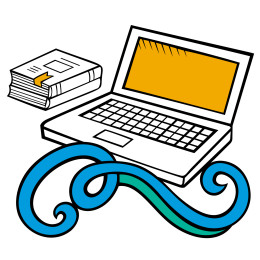
The United States Patent and Trademark Office (USPTO) is committed to broadening access, opportunity, and participation in innovation, invention, and entrepreneurship for students of all ages. Read these inspirational stories of how some young inventors are changing the world around them by transforming their ideas into action to bring innovation to impact.
Learn and read more about other youth inventors and entrepreneurs from our Journeys of Innovation series.

Katia Avila & Garey HS InvenTeam
Katia Avila & Garey HS InvenTeam
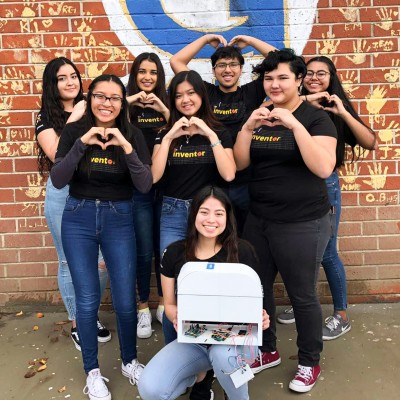
Katia Avila & Garey HS InvenTeam
Katia Avila and her classmates, of the 2017 and 2018 Garey High School Lemelson-MIT InvenTeam, invented a wearable device called Heart & Sole. The device uses sensors to gauge the progression of neuropathy and key disease indicators by measuring blood flow and oxygen content in a foot for diabetics. Katia, who had little knowledge of engineering prior to this experience, led the production of the oxygen saturation sensor for the InvenTeam project. She credits her experience with inventing as a turning point in her career path.
The team filed a nonprovisional application for patent in 2018 with pro bono support from the Microsoft #MakeWhatsNext Patent Program. They were awarded U.S. Patent 11,382,564 on July 12, 2022.
Katia's story

Katia works at Microsoft as an Explorer Intern while pursuing a computer engineering degree at the University of California, Santa Cruz (UCSC). At UCSC, she has found a passion for education and aims to continue supporting the community as a professor in engineering. Katia was a panelist at the 2021 and 2022 National Summer Teachers Institute and the USPTO's Invention-Con 2021.
Related links
- Garey High School InvenTeam Granted U.S. Patent
- Journeys of Innovation - At the heart of invention
- How Invention Uplifted and Changed the Course of Students and Their Community
- Garey High School InvenTeam - #MAKEWHATSNEXT Patent Program Inspires Young Female Inventors
- USPTO's Patent Pro Bono Program
Are you the parent or guardian of a young inventor, maker, or entrepreneur? Contact us, we'd like to hear your story!
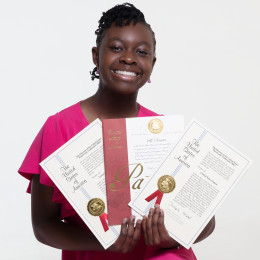
Gabby Goodwin
Gabby Goodwin
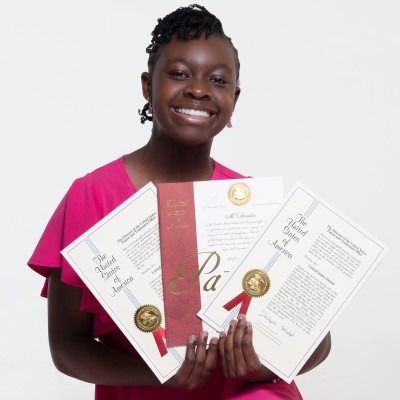
Gabby Goodwin
When Gabby Goodwin was 5 years old, her mother, Rozalynn, became frustrated because Gabby would return home from school every day without her hair barrettes. After Rozalynn vented about the problem on social media, the family's pastor suggested the Goodwins create their own barrettes that wouldn’t get lost.
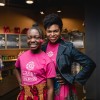
Inspired, Gabby kept asking her mom when they could start a science project to create a solution for her lost hair accessories. Rozalynn finally agreed, and the mother-daughter duo embarked on their adventure in search of a better product. When they couldn’t find one, they invented their own solution -- GaBBY Bows, a double-sided barrette.
The end results included products, patents, trademarks, and a company where Gabby markets her own products and teaches other girls and moms how to start their own businesses. In 2016, GaBBY Bows was named the Outstanding Diverse Business at the 2016 SCORE awards.
To find the intellectual property owned by Gabby’s entrepreneurial efforts, see utility patent 9,788,628, design patents D738040, and D898,997, and registered trademarks numbers 5,903,263, 5,902,912, and 6,033,001.
Gabby's story proves you are never too young to turn your ideas into reality.
Related links
Gabby and her mom Rozalynn on "The Real"
Kid entrepreneur invented a better barrette—and gained confidence, too
Pathways to invention, entrepreneurship, and STEM careers for K-12 and beyond
Are you the parent or guardian of a young inventor, maker, or entrepreneur? Contact us We'd like to hear your story!
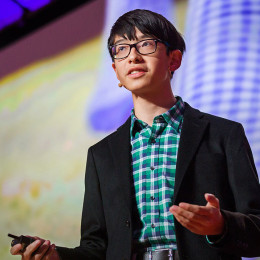
Kenneth Shinozuka
Kenneth Shinozuka
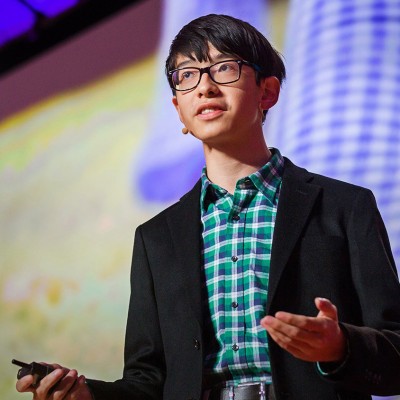
Kenneth Shinozuka
At the age of 14, Kenneth Shinozuka invented the SafeWander® Sock Sensor: a pressure sensor worn in a sock to alert a caregiver that their patient got out of bed. Kenneth came up with this idea to help his family take care of his grandfather with Alzheimer's who would night-wander. Kenneth coded a mobile app to accompany the pressure sensor and create a wireless monitoring system.
Kenneth won the 2014 Google Science Fair, the WebMD 2015 Health Hero award, and has been featured on NBC News for his sock sensor invention. Kenneth received US Patent 8,736,439 for his invention on May 27, 2014.
After graduating from Harvard, Kenneth is currently working on his Ph.D. at Oxford, conducting neuroscience research in the Department of Psychiatry on the pathology of Alzheimer’s Disease. He is the Founder and CEO of SensaRx, a New York City-based startup that has successfully launched SafeWander wearable sensor products for bed-wandering detection and fall prevention.
Related Links
How Consciousness Can Save the World
Teen Invents Sensor to Help Alzheimer’s Patients – NBC News
TEDTalk - Kenneth Shinozuka: My simple invention, designed to keep my grandfather safe
Kenneth Shinozuka is one of WebMD’s 2015 Health Heroes
Are you the parent or guardian of a young inventor, maker, or entrepreneur? Contact us, we'd like to hear your story!
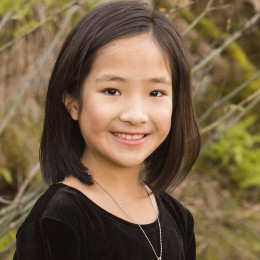
Jennifer Wen
Jennifer Wen
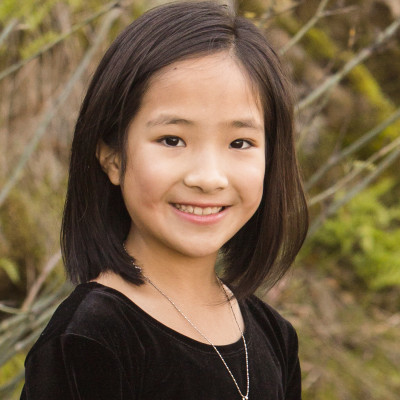
Jennifer Wen
Jennifer loved exploring her mother's sewing box to see if she could invent new uses for the items she found there. One day she saw a hoop and loop fastener and wrapped it around a few of her toys. She then wrapped it around a book and then a few pages in the book. Jennifer taped an arrow to the hoop and loop fastener, thinking it would make a cool bookmark because she could mark the page and the last word she read in the book.
Jennifer shared her bookmark idea with her brother Brian, and the siblings worked to improve the design. Brian noticed the bookmark's arrow was fragile and suggested replacing it with a clear window so readers could mark the page and see the final word they read. Jennifer and Brian filed a patent application for their bookmark in June 2019 and were granted U.S. Patent 10,857,827 in December 2020.
Jennifer and Brian served as panelists at the 2021 National Summer Teacher Institute and the 2021 USPTO Invention-Con.
Are you the parent or guardian of a young inventor, maker, or entrepreneur? Contact us; we'd like to hear your story!

Christianna Alexander
Christianna Alexander
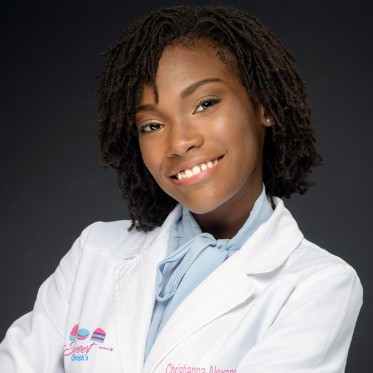
Christianna Alexander
At twelve years old, Christianna decided she wanted to start a business. Her three business ideas were baking, arts and crafts, and soap. Baking turned out to be more of a challenge than she expected, and her paintings and drawings didn’t sell as she hoped. Not one to give up easily, Christianna turned her passion into purpose by creating Sweet Christi’s, a company that makes all-natural, plant-based soaps resembling the delectable desserts she tried to bake. Christianna dedicated her company to teaching girls the importance of self-care.
Christianna has earned accolades from Beyonce’s BeyGood Foundation, won pitch competitions, and been named a Disney Dreamer. She has been featured on HSN and QVC home shopping networks, participated in the United States Patent and Trademark Office (USPTO) “Girl Powered Inventor and Entrepreneurship” symposium, and started a non-profit to educate girls about entrepreneurship, literacy, philanthropy, and neurodiversity. In addition, she is an ambassador for children with neurodiversity and the best-selling author of the children’s book, “Stay Sweet and Never Miss a Beat.”
As CEO of Sweet Christi’s, Christianna owns various forms of intellectual property, including copyrights.
Related links
Christiana's interview with USPTO Deputy Director Brent at Youth Day 2022
Meet 2022 Disney® Dreamer Christianna Alexander
Christianna @ Youth Day 2022
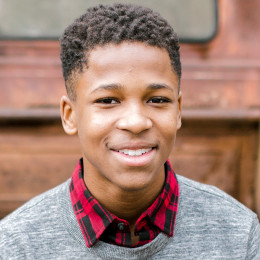
Bishop Curry V
Bishop Curry V

Bishop Curry V
At the age of ten, Bishop Curry was inspired to invent a way to prevent the accidental death of children in hot cars after a tragedy involving a young child in his neighborhood. Starting with a rough sketch, Bishop came up with an idea for a device that included motion sensors, global positioning, messaging capabilities, and more.
Bishop’s device, which he called "Oasis," attaches to the top of a child's car seat. A motion sensor detects a child in a motionless car, and within minutes sends a message to the parents, then alerts the authorities, including the car’s location. At the same time, the device activates a thermoelectric cooling device to blow cool air on the child until help arrives. Regarding the name choice, Bishop said that he called his invention "Oasis" because an oasis is cool and when he looks at an oasis, it makes him think of relief.
From that initial sketch, Bishop has built a crowdfunded functional prototype. He filed for a U.S. patent, which was issued in April 2018 as U.S. Patent 9,937,830.
Related links
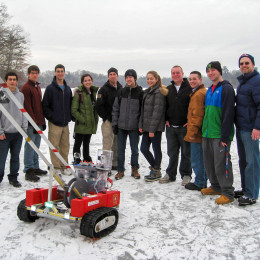
Katelyn Sweeney
Katelyn Sweeney
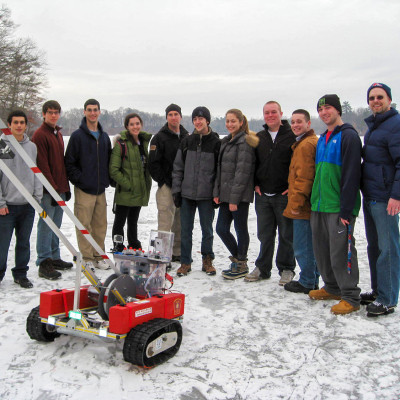
Katelyn Sweeney
Katelyn Sweeney wanted to take theater when she was mistakenly placed in a technology class that changed her life. It was there she met a teacher passionate about invention education, who inspired her to pursue a career in STEM. Katelyn’s newfound interest in engineering and helping others led her to projects in other countries, as well as meeting President Obama.
Inspired by their work with the Natick Fire Department, Katelyn and her fellow Lemelson-MIT InventTeam teammates designed, built, tested, and patented a Search and Rescue Robot. The remote controlled submersible rescue vehicle for ice divers, US Patent No 9,511,833 B2, was then presented at a Science Fair at the White House in 2014. Katelyn's newfound passion for engineering and helping others led her to healthcare engineering projects in Uganda, Kenya, and Ethiopia, as well as an internship with SpaceX.
Katelyn graduated from Massachusetts Institute of Technology with a degree in Mechanical Engineering and a minor in Entrepreneurship and Innovation. She is currently a mechanical engineer and mentors an all-girl robotics club in Palo Alto, California. Katelyn continues to spread her passion for invention and innovation, inspiring young girls across the country to pursue careers in STEM fields.
Related links
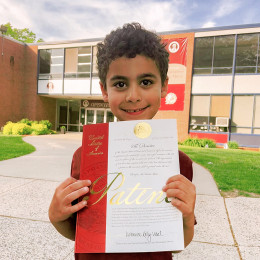
Matthew Sleman
Matthew Sleman
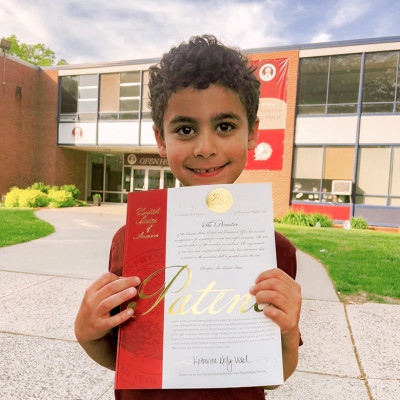
Matthew Sleman
Matthew’s innovation journey began at the age of 5 when he became curious about intellectual property. He wanted to invent something he could patent. Matthew started thinking about his plastic, interlocking building bricks, wondering how he could elevate the fun factor. As Matthew brainstormed ideas for what he could change about the bricks, the idea came to him—why not make the bricks change colors?
Matthew tested different methods of coating the bricks to make them change color, and with the help of his parents, applied for a patent. Matthew’s patent for color-changing building bricks, U.S. Patent Number 11,642,606, was issued in May 2023, making Matthew one of the youngest U.S. patent holders. Matthew proudly took his patent to school to share with his class.
Related links
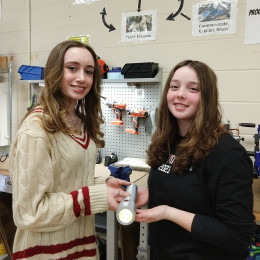
Nicolette Buonora and Lauren Strechay
Nicolette Buonora and Lauren Strechay
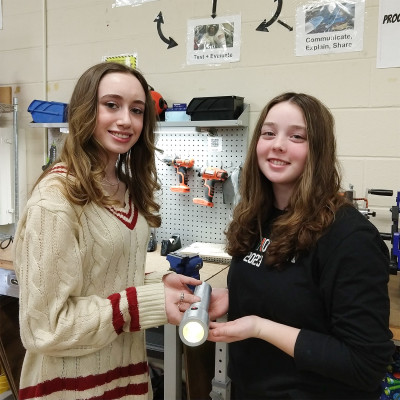
Nicolette Buonora and Lauren Strechay
Nicolette Buonora and Lauren Strechay were sophomores in high school when they created an invention that could help first responders everywhere. For a class project in Doug Scott’s Engineering and Robotics course, Nicolette and Lauren interviewed first responders in their community, seeking to identify a real-world problem they could invent a solution for. “[Police officers] said sometimes during late-night shifts,” Lauren reported, “the officer’s flashlight batteries would die out and they wouldn’t have an easy way to replace them—especially if they’re out doing something.” Nicolette and Lauren used 3D printers to improve on a series of prototypes and invented a way to incorporate a second power source into the flashlight. Their invention, named “Battery Swap,” allows first responders to quickly and easily switch to a fresh battery and ensures that they’ll always have a reliable light source to do their critical work.
Nicolette and Lauren’s invention has garnered state, national, and international praise. They won the Industry Merit Award for Energy at the 2021 Massachusetts Invention Convention, received a top prize at the National Invention Convention hosted by the Henry Ford Museum in Michigan, and were recognized at the Global Invention Convention. Nicolette and Lauren filed a patent application with pro bono support from law firm Clark Hill PLC of Detroit, Michigan. They were issued U.S. Patent 11,892,131 on February 6, 2024.
Related links
- Pathways to invention, entrepreneurship, and STEM careers for K-12 and beyond
- Doug Scott, Nicolette and Lauren's teacher, is an alumnus the National Summer Teacher Institute, a USPTO professional development program for educators.
Are you the parent or guardian of a young inventor, maker, or entrepreneur? Contact us, we'd like to hear your story!
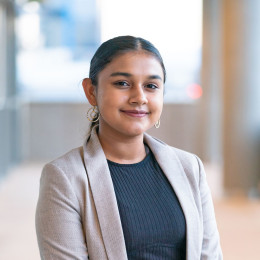
Gitanjali Rao
Gitanjali Rao
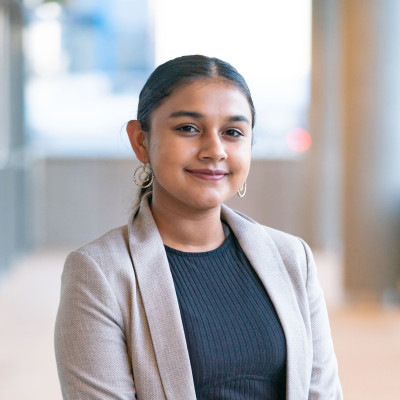
Gitanjali Rao
In second grade, Gitanjali Rao was already thinking about how she could use science and technology to make people’s lives better. While watching the news with her parents, Gitanjali heard about the water crisis in Flint, Michigan, where 40% of homes were receiving dangerously contaminated water, causing residents to suffer from rashes, patchy scalps, and—worst of all—brain damage in young children. She couldn't sleep that night because she kept thinking about how unfair it was that kids her age couldn’t access clean drinking water. The next morning, she resolved to find a way to help.
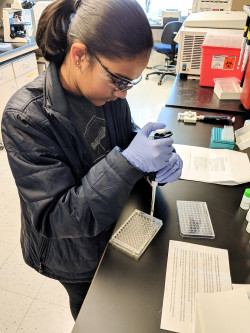
After more than a year of research, brainstorming, prototyping, and testing, Gitanjali invented a device that uses nanotechnology to test water for contaminants and deliver fast, accurate results—all before she turned 11 years old. Gitanjali decided to name the device “Tethys,” for the Greek goddess of fresh water. On August 10, 2021, she received U.S. Patent 11,085,907 B2 for her invention.
Now, Gitanjali holds innovation workshops all across the world. She shares her simple mantra of “Observe, brainstorm, research, build, and communicate” to inspire young people to innovate and invent solutions to the problems they see in the world. Through her workshops and TED Talks, Gitanjali has inspired more than 40,000 students on four continents. She was honored in Forbes 2019 “30 Under 30 in Science” and named TIME’s Kid of the Year in 2020. In 2021, she published “A Young Inventor's Guide to STEM,” a book for students and teachers that builds on her innovation methods. She is currently enrolled at the Massachusetts Institute of Technology, where she plans to study biological engineering, entrepreneurship, and innovation.
Related links
- One girl’s commitment: Gitanjali Rao’s Journey of Innovation
- Gitanjali explains her Tethys invention for the 2017 Discovery Education 3M Young Scientist Challenge
- TIME Kid of the Year: Interview with Gitanjali Rao and Angelina Jolie (2020)
Are you the parent or guardian of a young inventor, maker, or entrepreneur? Contact us, we'd like to hear your story!

Vennela Attili
Vennela Attili
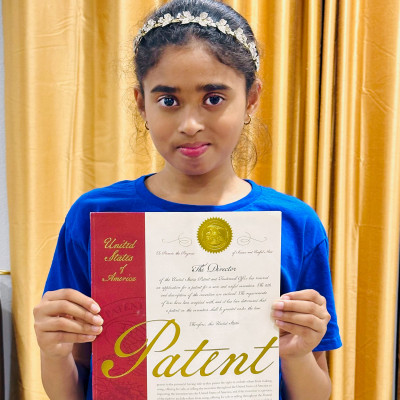
Vennela Attili
Kindergartener Vennela Attili had a problem that might be familiar to children everywhere: She struggled to fall asleep by herself. Every night, her mom would sit with her, pat her back, and help her drift off–but often, Vennela’s mom would fall asleep before Vennela did! One day in school, Vennela’s teacher asked her to come up with an idea for an invention. The next time Vennela was lying awake, she realized she could invent a solution. Using a teddy bear, spare cloth, sticks, and a vibrating motor, Vennela created a prototype for an invention she named “Happy Sleep.”
The Happy Sleep doll is a stuffed animal that mimics body temperature, breath sounds, and gentle movement to create the comfort of a living being that can help lull a child to sleep. Vennela won a Merit Award for her Happy Sleep invention at the 2019 Invention Convention Worldwide and received U.S. Patent 11,020,678 B2 in 2021. She gave her invention the tagline “Happy sleep makes happy kids” and hopes that it will provide comfort to children everywhere, especially those who are undergoing chemotherapy or dealing with health issues.
Related links
- Vennela explains her invention at the 2019 Invention Convention Worldwide.
- Learn about Beulah Henry, a prolific inventor who also patented lifelike dolls.
- Read the Journeys of Innovation story about Eddy Goldfarb, who invented hundreds of popular toys that children still play with today.
Are you the parent or guardian of a young inventor, maker, or entrepreneur? Contact us, we'd like to hear your story!
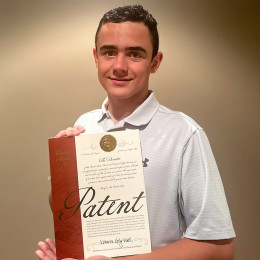
William LeFaivre
William LeFaivre
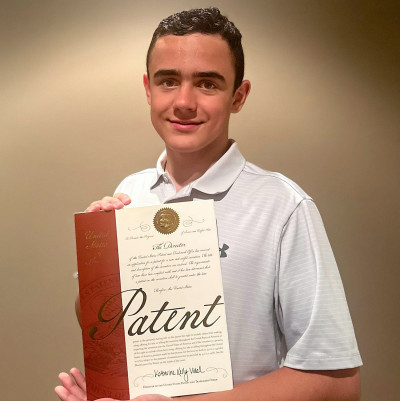
William LeFaivre
Just like so many other people learning to ski for the first time, third grader William LeFaivre faced a persistent challenge on the slopes: keeping his skis parallel. Frustrated by the constant swerves, tumbles, and crashes caused by crossed skis, William saw a need for a way to more easily visualize if his mechanics were correct and his skis aligned. After careful testing, iterating, and prototyping, William created Ski Sense. Ski Sense is a network of sensors attached to skis that use Bluetooth technology to provide instant guidance to skiers on their technique. A vibrator attached to the skier’s helmet and lights attached to the front of the skis—green for perfectly parallel, orange for when slight adjustments are needed, and red for when alignment is seriously off-track—give a skier real-time feedback on their mechanics, gently indicating when their form needs to be corrected.
William encountered several challenges in his invention process. At first, he planned to use only one sensor; when he realized that wouldn’t work if the sensors weren’t in precisely the right position, he pivoted to create a network of sensors that would work together to determine the skis’ alignment. William also had to revise his earlier prototypes when snow build-up became an issue, forcing him to switch from laser and infrared sensors to proximity sensors. Ultimately, William’s persistence paid off. Ski Sense was issued U.S. Patent 11,724,168 B1 on August 15, 2023, with pro bono support from the law firm WilmerHale.
William is passionate about creating things to help people. After Ski Sense, he began working on a set of virtual reality goggles designed to make children with sensory-processing disorders, like William’s younger brother, feel comfortable while doctors take their vital signs. "I like designing stuff, and I always wanted to invent stuff when I was younger," he said in a local news story. "This might be good practice for when I'm an adult and can make things to help people."
Related links
- Learn more about the patent process
- Read more about William’s passion for helping others through invention
Are you the parent or guardian of a young inventor, maker, or entrepreneur? Contact us, we'd like to hear your story!

Travis Edwards
Travis Edwards
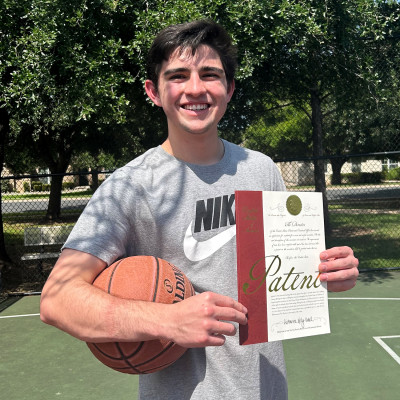
Travis Edwards
Travis Edwards could not fix his crooked basketball shot. No matter how many hours he spent practicing in his driveway, trying out different mechanical and corrective exercises, he could not figure out how to make the ball fly straight and true into the basket. Frustrated but undeterred, he realized he would have to get creative to find a solution and level up his basketball game to what he knew was possible. Travis started with an idea and took action to put that idea into practice. Using a few rubber bands, and some duct tape, he began crafting and improving on a device that would eventually become his first patented invention: the “Follow Through Fixer.”

In the course of creating and continually improving on the Follow Through Fixer, Travis did what inventors often have to do: He taught himself what he needed to know. When his experiments with different rubber band configurations no longer yielded new results in his prototypes, Travis taught himself 3-D printing to create the custom-shaped elements he needed to take the device further. When he reached the point where he realized that he might have something useful to other people, Travis researched marketability and learned about the importance of protecting his intellectual property (IP) with a patent. Travis submitted a provisional application for a patent to the U.S. Patent and Trademark Office (USPTO) in October 2020, knowing that this provisional application would serve as a placeholder and give him a year to figure out whether to submit a non-provisional utility patent application.
Impressively, Travis filed his patent application pro se. "Pro se" is Latin for “in one’s own behalf.” Travis filed his patent application independently, without a lawyer or patent agent. He talked to IP experts and college professors near his hometown, researched how to file a patent on the USPTO website, and watched instructional videos on YouTube. Before filing his application, Travis also did research to see if there were any other inventions like his and, if so, how his invention was new, different, or an improvement on existing inventions. He also worked with a freelance artist to create the detailed drawings that are required when submitting a patent application. With his parents’ help, Travis parsed through the legal language and requirements for filing and prosecuting a patent application. All of his work and determination paid off and on January 23, 2024, he was issued U.S. Patent No. 11,878,228 B2 for his invention, which he dubbed the “Follow Through Fixer.”
Travis identified a problem important to him and developed a solution for it. His invention journey shows what can be accomplished with passion, curiosity, grit, and perseverance.
Related links
- Patent Basics: A guide for all things related to patents
- Learn more about how to file a patent application on your own
- Travis shares his innovation journey
- Watch Travis go into greater detail about his invention and the patent process in an interview with The Global Innovation Field Trip
- EdWeb Recording: The Perfect Shot: One Youth Inventor’s Journey to Building a Patented Shooting Aid for Basketball Players
Are you the parent or guardian of a young inventor, maker, or entrepreneur? Contact us, we'd like to hear your story!
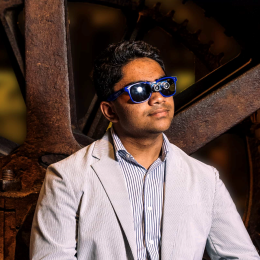
Sidharth Anantha
Sidharth Anantha
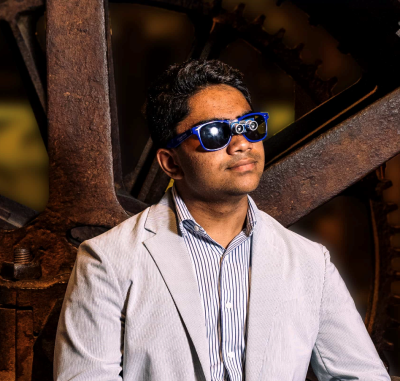
Sidharth Anantha
Did you know that almost 90% of the world’s visually impaired people live in developing countries? When Sidharth Anantha learned this fact, he resolved to find a way to help. Sidharth knew that many of these people, including in his birthplace of India, wouldn’t be able to access the more expensive, high-tech solutions available in countries like the United States. So, he resolved to create something that more people could afford. On a flight to India one day, Sidharth noticed a woman tapping a stick to count the rows she passed to find her seat. From this observation, he got the idea for a hands-free device that could help blind people navigate their surroundings more easily. Sidharth’s invention uses echo-location and machine learning to locate objects in space around the user. The device combines sonar in small-factor form with an Arduino® processor (a small, open-source microprocessor that makes it very easy for people to create digital devices on their own) to provide auditory or haptic feedback when approaching an obstacle. The device is small enough to be attached to a shoe or glasses, making it easy to use and cheap to manufacture. Sidharth named his invention "Seeing for the Blind."
Like so many other successful inventors, Sidharth continually improved his initial invention to make it more functional and easier to use. He created a version that uses a Raspberry Pi® microcomputer connected to a camera and machine learning program, all powered by a portable battery pack. This improvement enabled the identification of objects directly in front of the user, so that users could be alerted through an audible announcement. Both versions are able to fit in one belt pouch, allowing the user to switch between them depending on the situation. Eventually, Sidharth hopes to create a version of Seeing for the Blind that actually identifies objects themselves, not just their location in space.
Sidharth won many awards for his invention, including the Henry Ford’s Model I Youth Innovator Award. He was granted U.S. Patent No. 10,900,788 B2 for his invention on January 26, 2021. Sidharth is passionate about all things related to flight, and just completed a degree in mechanical engineering at the University of Michigan. His goal is to become an aerospace engineer and design jets that run on clean energy. “I want to have a meaningful effect on the world,” he says.
Related links
- Watch Sidharth explain how his Seeing for the Blind device works and give a demonstration in this video
- Patent Basics: A guide for all things related to patents
Are you the parent or guardian of a young inventor, maker, or entrepreneur? Contact us, we'd like to hear your story!
DISCLAIMER: References to particular products, patents, trademarks, service marks, services, individuals, companies and/or organizations in this profile are for educational purposes only and do not constitute or imply endorsement by the U.S. Government, the U.S. Department of Commerce, the U.S. Patent and Trademark Office, or any other federal agency.
Are you ready for more?
Learn more about innovation and intellectual property all around you.
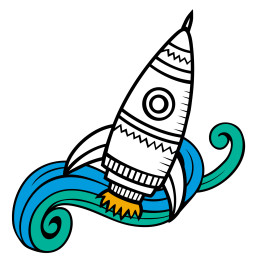
Inventors change the world
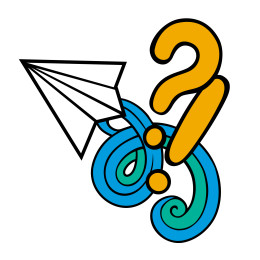
Let’s start creating!
